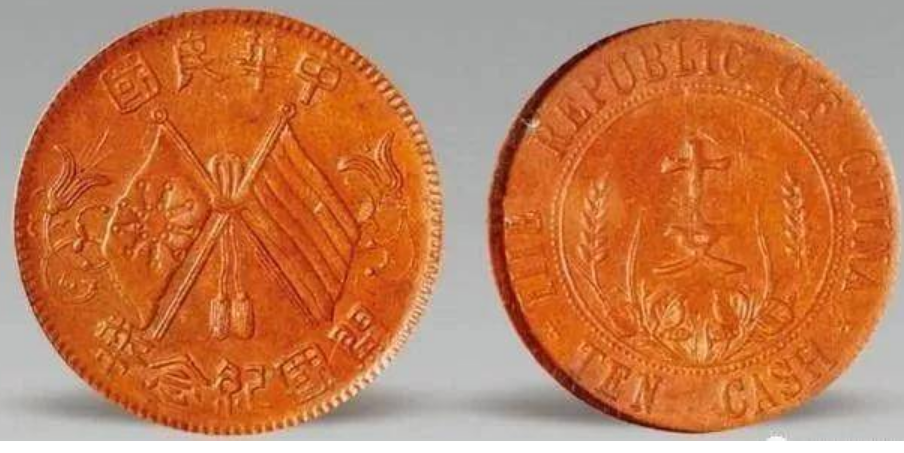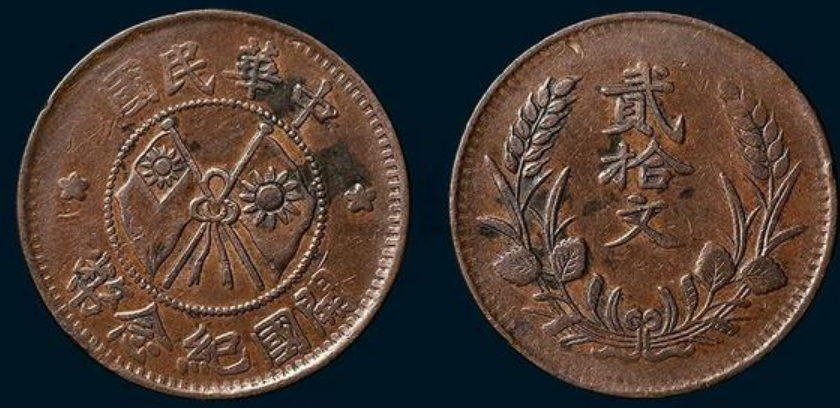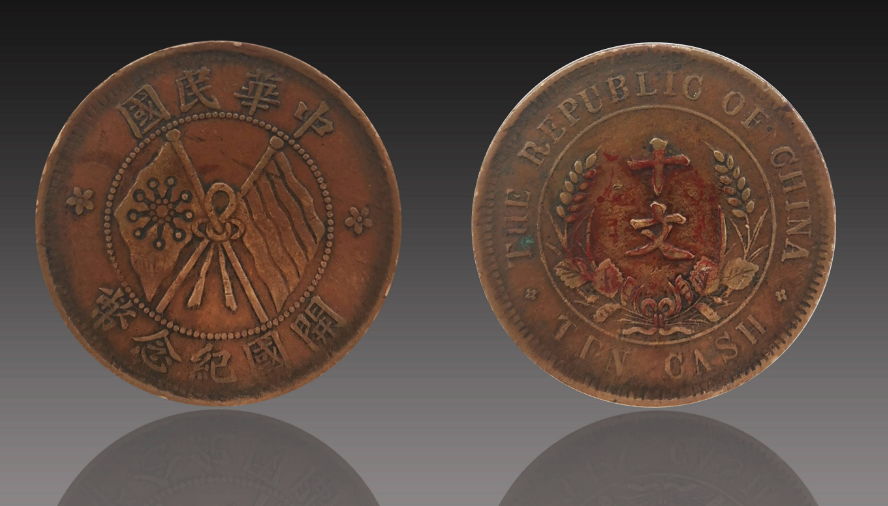After the Revolution of 1911, many provinces were no longer subject to the rule of the Qing Dynasty. At that time, 17 provinces also elected Mr. Sun Yat-sen as the interim president. On January 3, 1912, the government of the Republic of China was officially announced. At the same time It also means that the Qing Dynasty was completely destroyed, and the feudal dynasty that accompanied it for more than 2,000 years has since become history. At that time, because the government was just established, many places still used the currency of the Qing Dynasty, and some places used other currencies in order to change the chaos of this currency. At that time, the Ministry of Finance also proposed to Mr. Sun Yat-sen to start with Mr. Sun Yat-sen’s head Mint a batch of silver dollars to use as commemorative coins. Therefore, each province also began to respond to this kind of coin minting action, so coins with double flags were born accordingly, with the words commemorative coins for the founding of the country or copper coins of the Republic of China on the coins.
The birth of double-flag coins also brought the economy of many places under control, so the reason why we can see so many types of double-flag coins today is also because during the period of the Republic of China, each province began to mint double-flag coins to save its own local economy. It reflects that the double-flag currency played a very important role in the social background at that time, so we say that the double-flag currency also plays an indispensable role in economic status. It is not surprising that we can see many versions of Double Flag coins today. Of course, some of these double-flag coins are relatively rare and may have little storage space, and most of the copper double-flag coins actually have little storage space.

The two crossed flags on the double-flag coin are the flag of the Iron Blood Eighteenth Army and the flag of the government of the Republic of China at that time. Iron Blood Eighteen Star Flag, referred to as Eighteen Star Flag, also known as Iron Blood Flag, Nine Corner Flag, Nine Corner Eighteen Star Flag, and Shouyi Flag. It is a symbol of the victory of the Wuchang Uprising. The flag is red, symbolizing the spirit of iron and blood; the eighteen stars represent the eighteen provinces of Han, representing the whole country. With the raising of the flag of righteousness in Wuchang, all provinces responded, and a nationwide anti-Qing revolutionary movement quickly rose up, which eventually led to the end of the Qing Dynasty. The Blue Sky and White Sun Flag was the first flag formulated during the Revolution of 1911 and was designed by Lu Haodong, a member of the Revival Society. Later, the Chinese Kuomintang, which succeeded the Xingzhonghui, continued to use it as the party flag. The surface of the flag is blue to show the blue sky; in the center of the flag is a pattern of a white sun with forked lights. “Blue sky and white sun” is the emblem of the Chinese Kuomintang.

For the double-flag coins, the Hunan double-flag coins are more common. The two versions of the ten-character and twenty-character coins are more common in the Hunan double-flag coins. Generally speaking, the collection space for this version of the double-flag coins is It is not big, but there is also a double-flag coin with more collection space, which is the double-flag copper coin in Tianjin. The Qian Wen of this copper coin is a very beautiful coin, and it also has a lot of collection space. The collection of coins is mainly based on appearance and edition.



